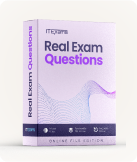Fortinet NSE6_FAC-6.1 - Fortinet NSE 6 - FortiAuthenticator 6.1 Exam
Page: 1 / 6
Total 30 questions
Question #1 (Topic: Exam A)
A device or user identity cannot be established transparently, such as with non-domain BYOD devices, and allow users to create their own credentials.
In this case, which user identity discovery method can FortiAuthenticator use?
In this case, which user identity discovery method can FortiAuthenticator use?
A. RADIUS accounting
B. Kerberos-based authentication
C. Portal authentication
D. Syslog messaging or SAMI IdP
Answer: C
Question #2 (Topic: Exam A)
What are three key features of FortiAuthenticator? (Choose three.)
A. RSSO server
B. Log server
C. Portal services
D. Certificate authority
E. Identity management device
Answer: ADE
Question #3 (Topic: Exam A)
Which two capabilities does FortiAuthenticator offer when acting as a self-signed or local CA? (Choose two.)
A. Merging local and remote CRLs using SCEP
B. Creating, signing, and revoking of X.509 certificates
C. Validating other CA CRLs using OCSP
D. Importing other CA certificates and CRLs
Answer: BD
Question #4 (Topic: Exam A)
Which two are supported captive or guest portal authentication methods? (Choose two.)
A. LinkedIn
B. Email
C. Apple ID
D. Instagram
Answer: AB
Question #5 (Topic: Exam A)
What happens when a certificate is revoked? (Choose two.)
A. External CAs will periodically query FortiAuthenticator and automatically download revoked certificates
B. Revoked certificates are automatically added to the CRL
C. All certificates signed by a revoked CA certificate are automatically revoked
D. Revoked certificates cannot be reinstated for any reason
Answer: AB
